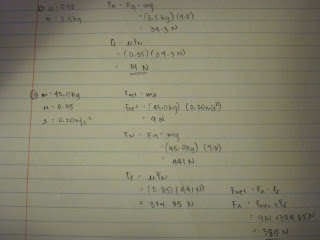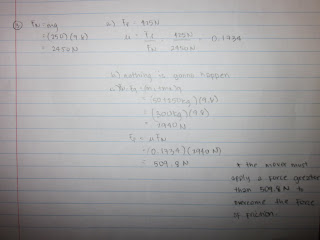June 2nd
Worked on Pages 44,45,46, and 48
Pages 5- 12
Notes:
An electric current is a flow of charged particles.
A conventional current is just a flow of a positive charge.
Charges can not be created or destroyed, but they can be seperated.
A resistor is a device designed to have a specific resistance.
Resistance is known as the ratio of potential difference to the current.
Temperature can increase resistance since a moving charge is affected by molecules, greater molecular motion would thus increase the resistance.
Formulas:
I = q/t
I is the conventional current measured in Amperes (A)
q is the charge measured in Coulombs (C)
t is the time measured in seconds (s)
P = IV
P is power measured in Watts (W)
V is the Potential Difference also reffered to as Voltage, it is measured in Volts (V)
R = V/I
R is the resistance, measured in ohms, the symbol omega (Ω) can be used to represent it.
R = pL/A
p is a constant(the resistivity of the metal) (Ω·m)
A is the crossectional Area (m^2)
L is the length of the material (m)
Useful Ratios to take note of:
R1/R2 = L1/L2
R1/R2 = A2/A1
R1/R2 = p1/p2
For P46
Nichrome wire resitivity at room temperature varies from 1.10 × 10−6 Ω*m to 1.5 × 10−6 Ω·m
Tungston wire resistivity at room temperature is 5.28 × 10−8 Ω·m


















































